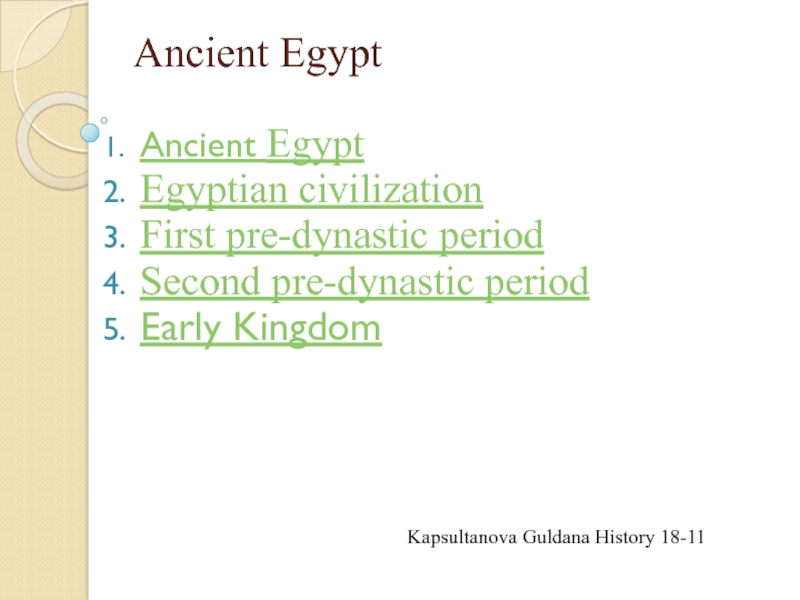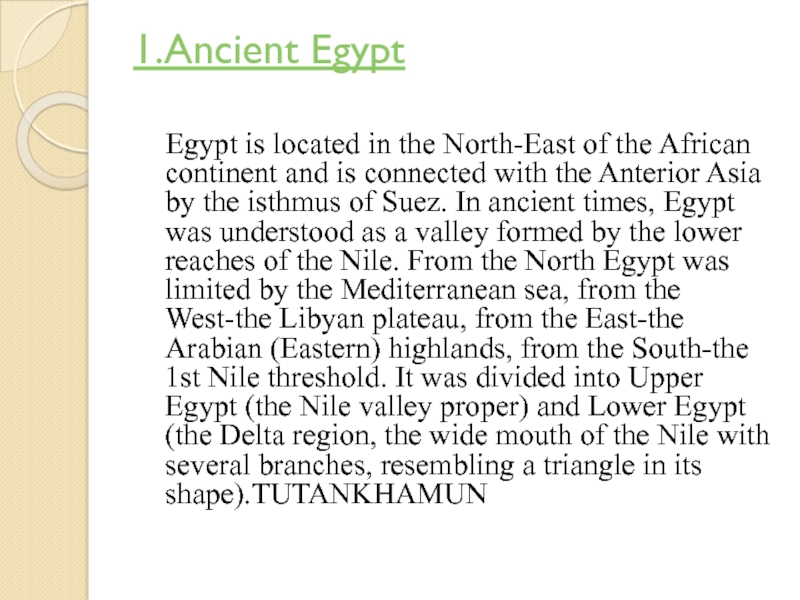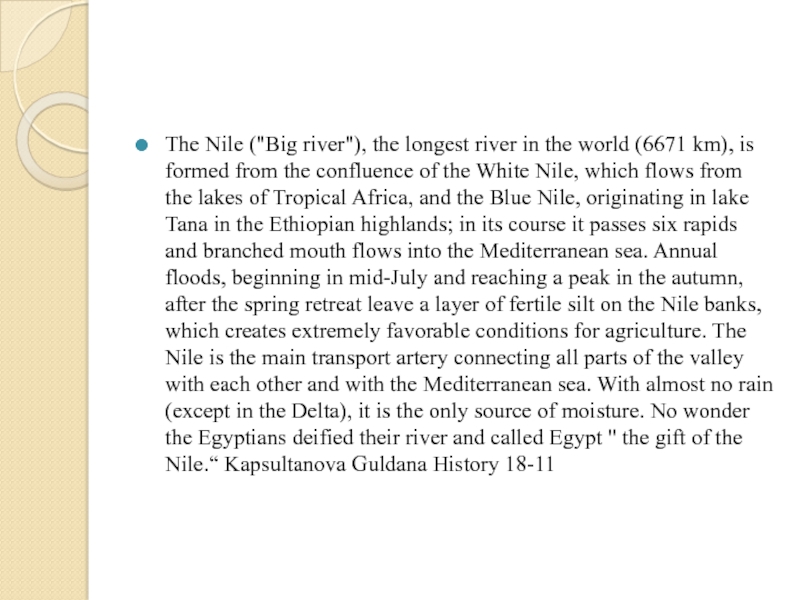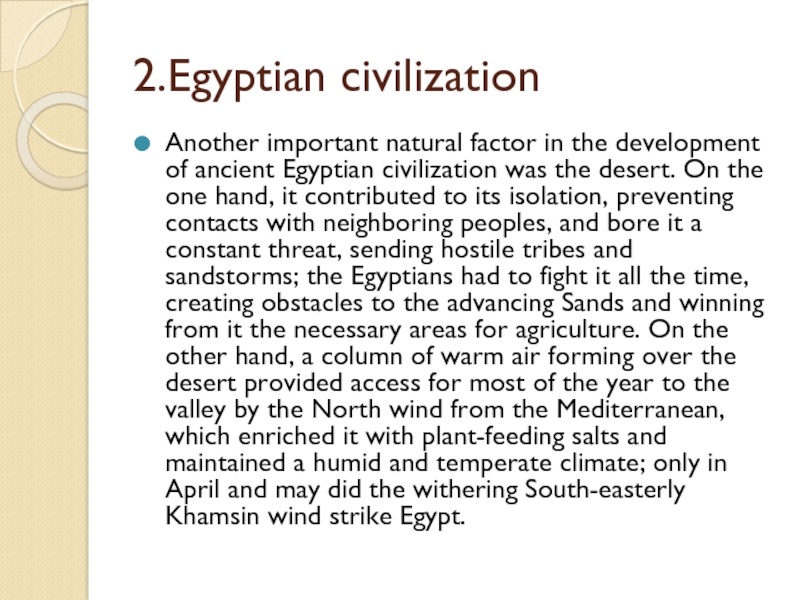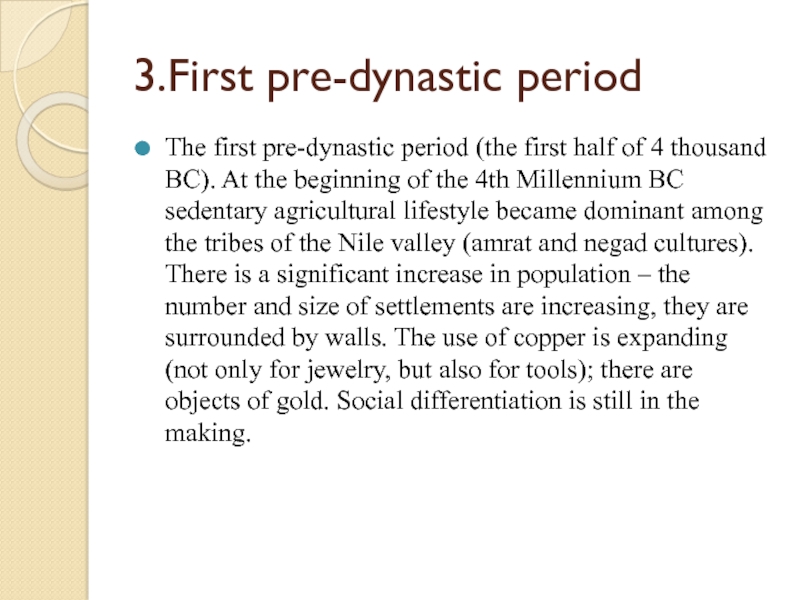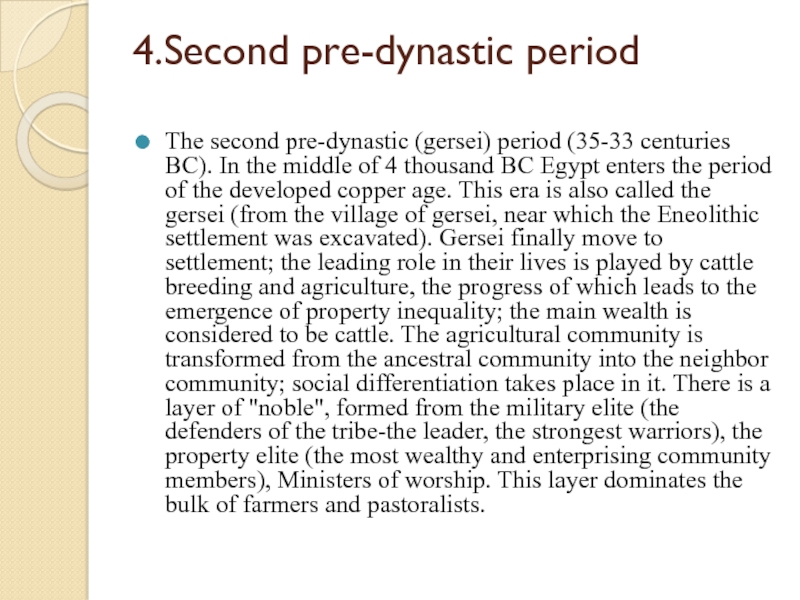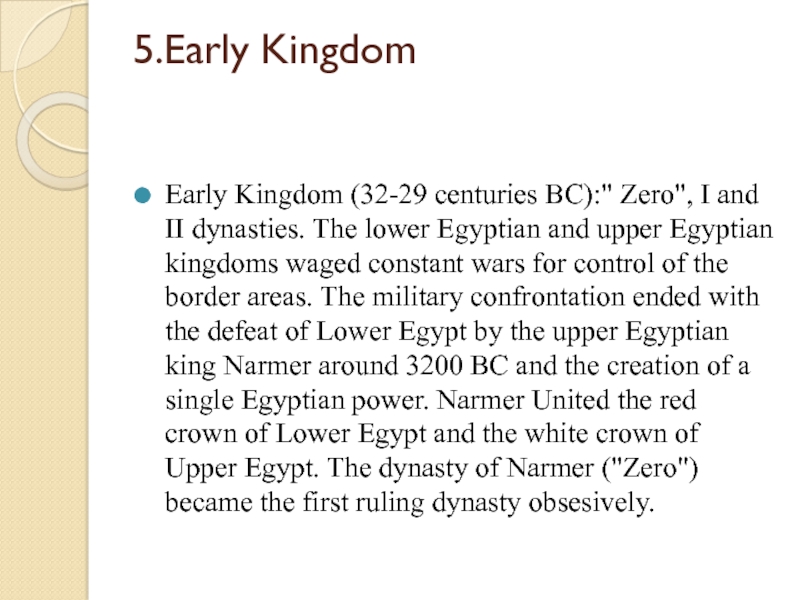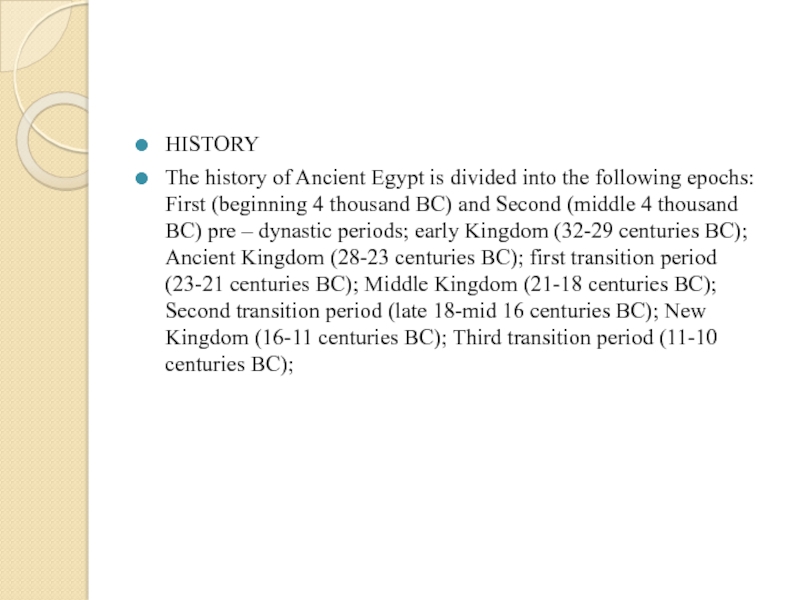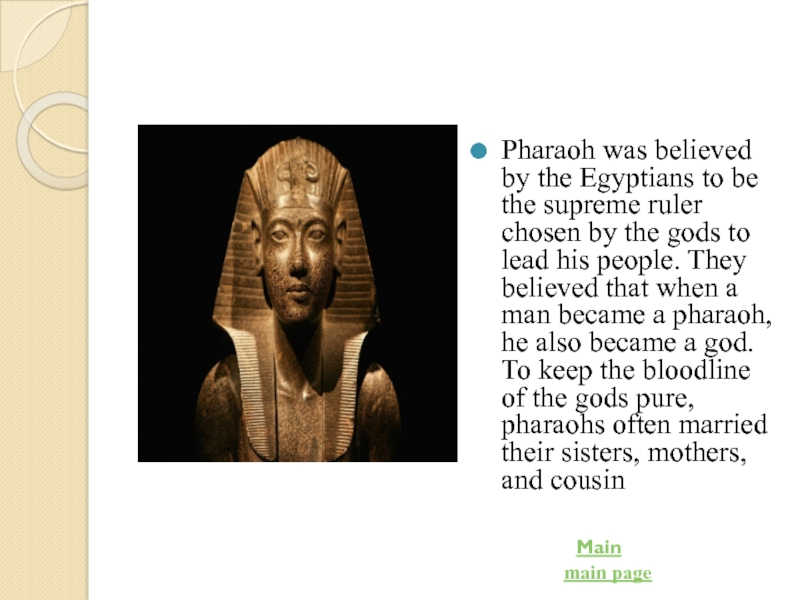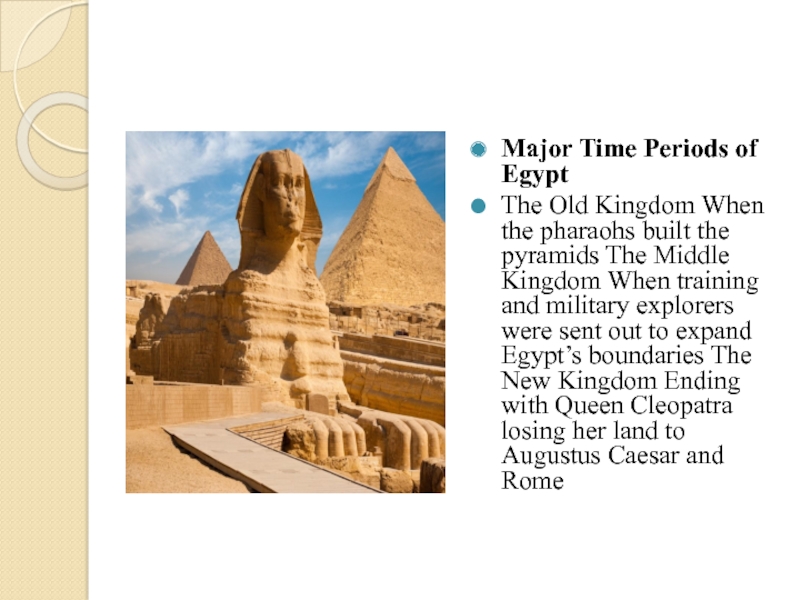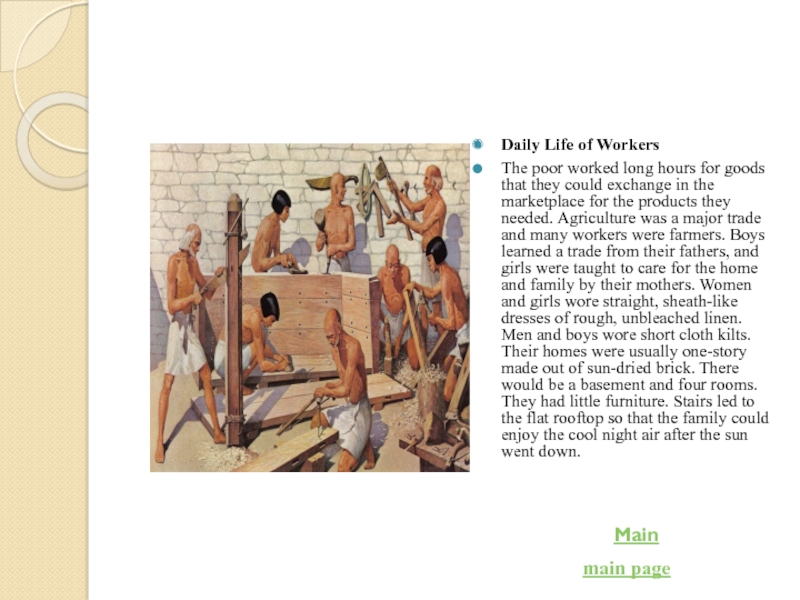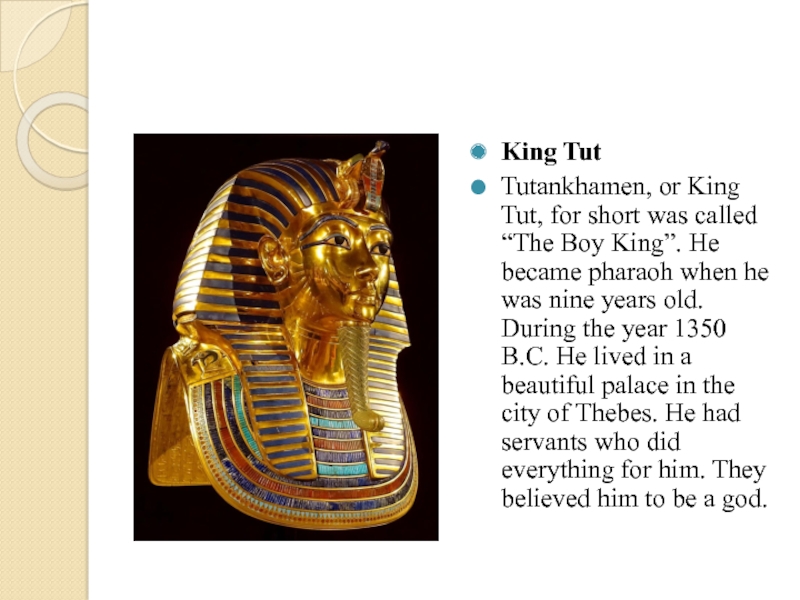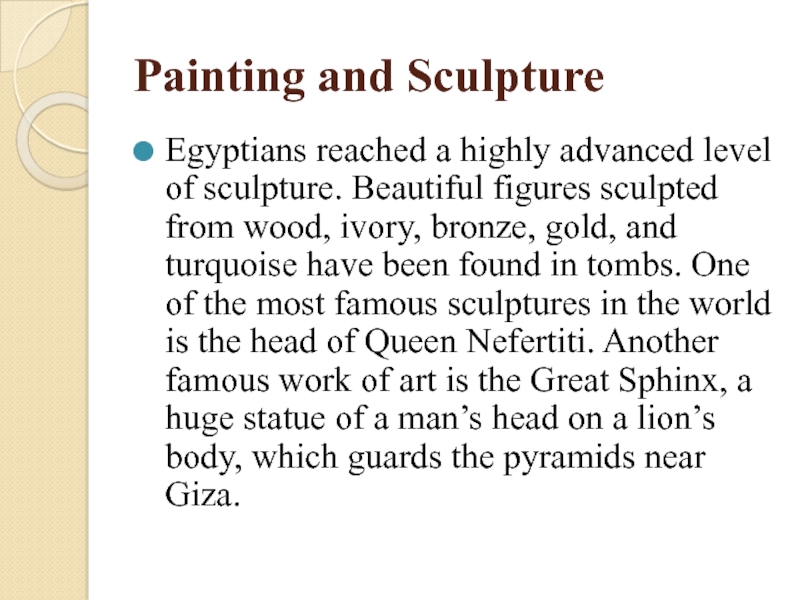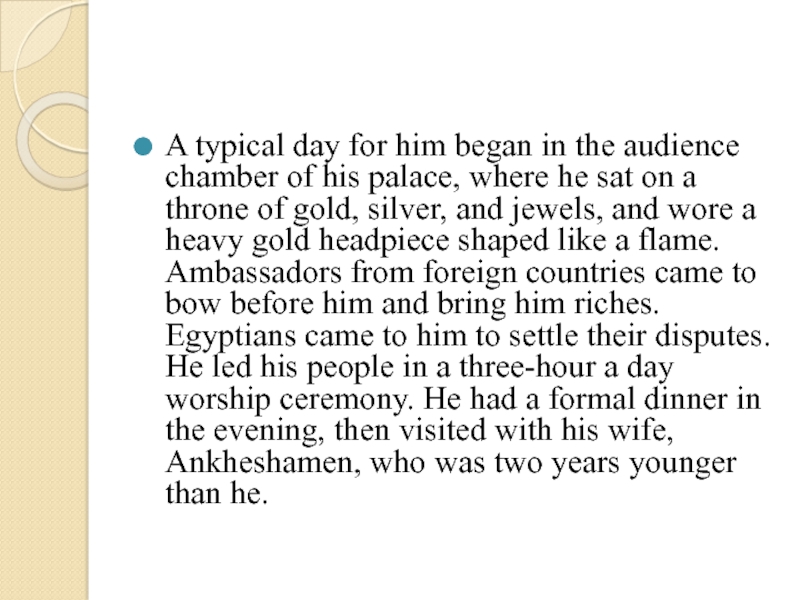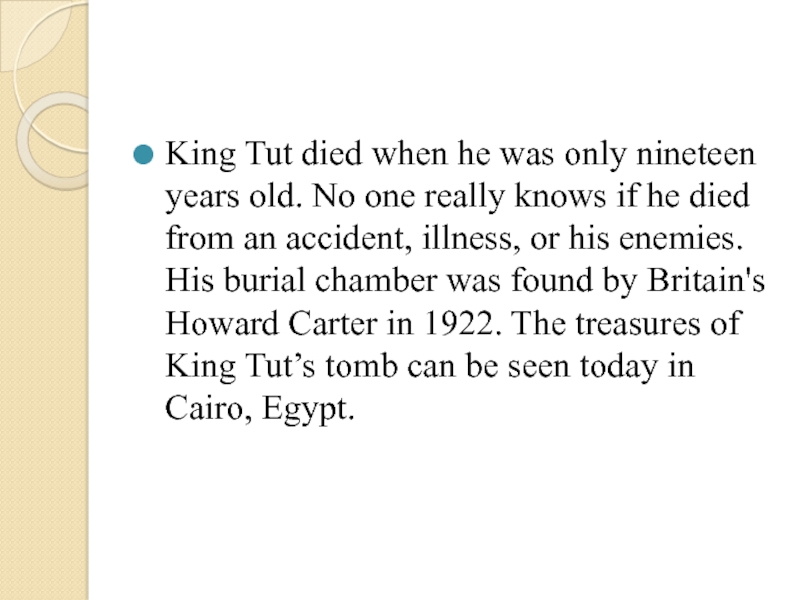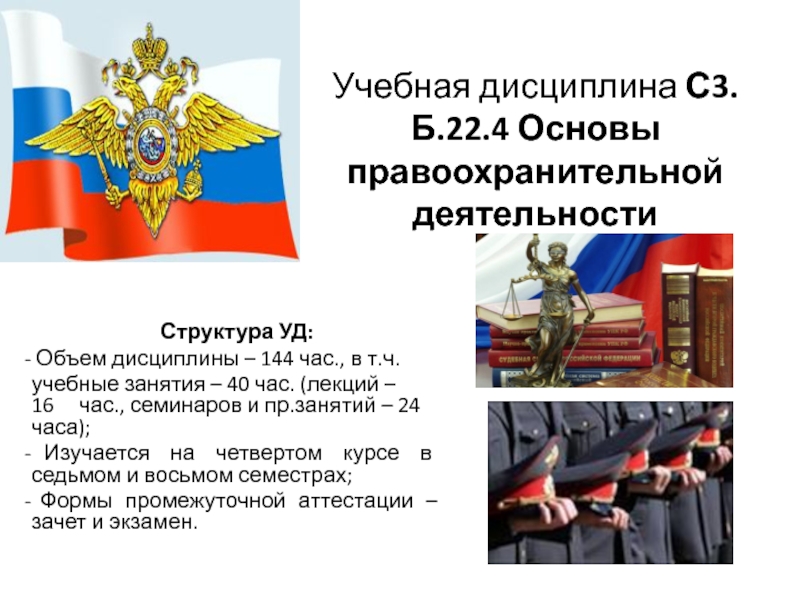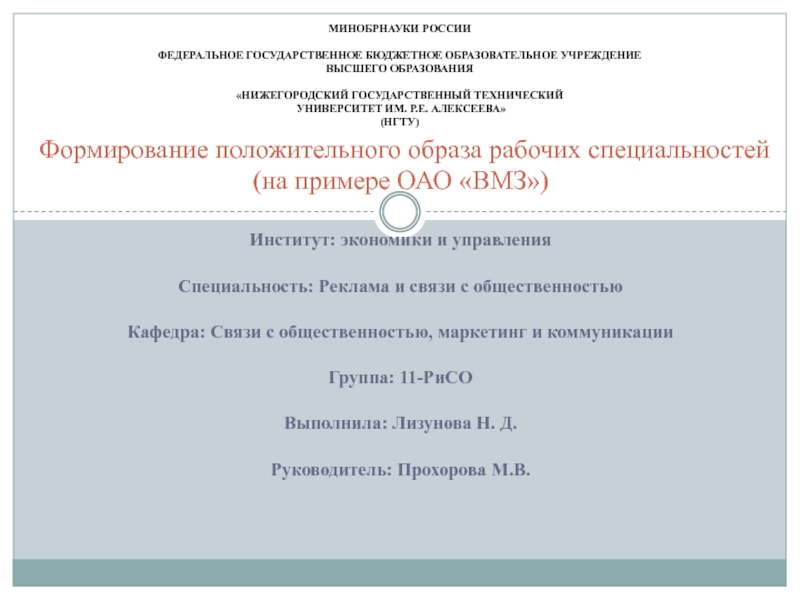Разделы презентаций
- Разное
- Английский язык
- Астрономия
- Алгебра
- Биология
- География
- Геометрия
- Детские презентации
- Информатика
- История
- Литература
- Математика
- Медицина
- Менеджмент
- Музыка
- МХК
- Немецкий язык
- ОБЖ
- Обществознание
- Окружающий мир
- Педагогика
- Русский язык
- Технология
- Физика
- Философия
- Химия
- Шаблоны, картинки для презентаций
- Экология
- Экономика
- Юриспруденция
Ancient Egypt
Содержание
- 1. Ancient Egypt
- 2. 1.Ancient Egypt Egypt is located
- 3. The Nile ("Big river"), the longest river
- 4. 2.Egyptian civilizationAnother important natural factor in the
- 5. 3.First pre-dynastic periodThe first pre-dynastic period (the
- 6. 4.Second pre-dynastic period The second pre-dynastic (gersei)
- 7. 5.Early Kingdom Early Kingdom (32-29 centuries BC):"
- 8. HISTORYThe history of Ancient Egypt is divided
- 9. Pharaoh was believed by the Egyptians to
- 10. Major Time Periods of EgyptThe Old Kingdom
- 11. Daily Life of WorkersThe poor worked long
- 12. King TutTutankhamen, or King Tut, for short
- 13. Painting and SculptureEgyptians reached a highly advanced
- 14. A typical day for him began in
- 15. King Tut died when he was only
- 16. Thank you for your attention!!!
- 17. Скачать презентанцию
1.Ancient Egypt Egypt is located in the North-East of the African continent and is connected with the Anterior Asia by the isthmus of Suez. In ancient times, Egypt was
Слайды и текст этой презентации
Слайд 1Ancient Egypt
Ancient Egypt
Egyptian civilization
First pre-dynastic period
Second pre-dynastic period
Early Kingdom
Kapsultanova Guldana
History 18-11
Слайд 21.Ancient Egypt
Egypt is located in the North-East of
the African continent and is connected with the Anterior Asia
by the isthmus of Suez. In ancient times, Egypt was understood as a valley formed by the lower reaches of the Nile. From the North Egypt was limited by the Mediterranean sea, from the West-the Libyan plateau, from the East-the Arabian (Eastern) highlands, from the South-the 1st Nile threshold. It was divided into Upper Egypt (the Nile valley proper) and Lower Egypt (the Delta region, the wide mouth of the Nile with several branches, resembling a triangle in its shape).TUTANKHAMUNСлайд 3The Nile ("Big river"), the longest river in the world
(6671 km), is formed from the confluence of the White
Nile, which flows from the lakes of Tropical Africa, and the Blue Nile, originating in lake Tana in the Ethiopian highlands; in its course it passes six rapids and branched mouth flows into the Mediterranean sea. Annual floods, beginning in mid-July and reaching a peak in the autumn, after the spring retreat leave a layer of fertile silt on the Nile banks, which creates extremely favorable conditions for agriculture. The Nile is the main transport artery connecting all parts of the valley with each other and with the Mediterranean sea. With almost no rain (except in the Delta), it is the only source of moisture. No wonder the Egyptians deified their river and called Egypt " the gift of the Nile.“ Kapsultanova Guldana History 18-11Слайд 42.Egyptian civilization
Another important natural factor in the development of ancient
Egyptian civilization was the desert. On the one hand, it
contributed to its isolation, preventing contacts with neighboring peoples, and bore it a constant threat, sending hostile tribes and sandstorms; the Egyptians had to fight it all the time, creating obstacles to the advancing Sands and winning from it the necessary areas for agriculture. On the other hand, a column of warm air forming over the desert provided access for most of the year to the valley by the North wind from the Mediterranean, which enriched it with plant-feeding salts and maintained a humid and temperate climate; only in April and may did the withering South-easterly Khamsin wind strike Egypt.Слайд 53.First pre-dynastic period
The first pre-dynastic period (the first half of
4 thousand BC). At the beginning of the 4th Millennium
BC sedentary agricultural lifestyle became dominant among the tribes of the Nile valley (amrat and negad cultures). There is a significant increase in population – the number and size of settlements are increasing, they are surrounded by walls. The use of copper is expanding (not only for jewelry, but also for tools); there are objects of gold. Social differentiation is still in the making.Слайд 64.Second pre-dynastic period
The second pre-dynastic (gersei) period (35-33 centuries BC).
In the middle of 4 thousand BC Egypt enters the
period of the developed copper age. This era is also called the gersei (from the village of gersei, near which the Eneolithic settlement was excavated). Gersei finally move to settlement; the leading role in their lives is played by cattle breeding and agriculture, the progress of which leads to the emergence of property inequality; the main wealth is considered to be cattle. The agricultural community is transformed from the ancestral community into the neighbor community; social differentiation takes place in it. There is a layer of "noble", formed from the military elite (the defenders of the tribe-the leader, the strongest warriors), the property elite (the most wealthy and enterprising community members), Ministers of worship. This layer dominates the bulk of farmers and pastoralists.Слайд 75.Early Kingdom
Early Kingdom (32-29 centuries BC):" Zero", I and II
dynasties. The lower Egyptian and upper Egyptian kingdoms waged constant
wars for control of the border areas. The military confrontation ended with the defeat of Lower Egypt by the upper Egyptian king Narmer around 3200 BC and the creation of a single Egyptian power. Narmer United the red crown of Lower Egypt and the white crown of Upper Egypt. The dynasty of Narmer ("Zero") became the first ruling dynasty obsesively.Слайд 8HISTORY
The history of Ancient Egypt is divided into the following
epochs: First (beginning 4 thousand BC) and Second (middle 4
thousand BC) pre – dynastic periods; early Kingdom (32-29 centuries BC); Ancient Kingdom (28-23 centuries BC); first transition period (23-21 centuries BC); Middle Kingdom (21-18 centuries BC); Second transition period (late 18-mid 16 centuries BC); New Kingdom (16-11 centuries BC); Third transition period (11-10 centuries BC);Слайд 9Pharaoh was believed by the Egyptians to be the supreme
ruler chosen by the gods to lead his people. They
believed that when a man became a pharaoh, he also became a god. To keep the bloodline of the gods pure, pharaohs often married their sisters, mothers, and cousinMain
main page
Слайд 10Major Time Periods of Egypt
The Old Kingdom When the pharaohs
built the pyramids The Middle Kingdom When training and military
explorers were sent out to expand Egypt’s boundaries The New Kingdom Ending with Queen Cleopatra losing her land to Augustus Caesar and RomeСлайд 11Daily Life of Workers
The poor worked long hours for goods
that they could exchange in the marketplace for the products
they needed. Agriculture was a major trade and many workers were farmers. Boys learned a trade from their fathers, and girls were taught to care for the home and family by their mothers. Women and girls wore straight, sheath-like dresses of rough, unbleached linen. Men and boys wore short cloth kilts. Their homes were usually one-story made out of sun-dried brick. There would be a basement and four rooms. They had little furniture. Stairs led to the flat rooftop so that the family could enjoy the cool night air after the sun went down.Main
main page
